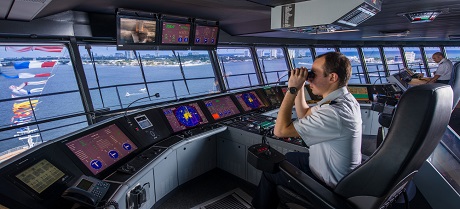ECDIS: from problem to solution?
In a series of blogs last autumn, GNS asked why ECDIS still appears to be causing serving navigators so many operational problems, so long after the technology was introduced. The answers are numerous, ranging beyond training and familiarisation to operator interaction with hardware and software.
We were keen to include the views of an OEM, and Northrop Grumman Sperry Marine declared itself willing to answer some challenging questions: why do navigators struggle with the ECDIS interface, can standardisation be improved, what about S-Mode and what will the future look like?
In terms of how to make the ECDIS interface better for users, Simon Cooke, Technical Manager, says the Sperry position is “that it is essential to have navigators involved in the ECDIS design to ensure that manufacturers are meeting their needs.”
In addition to manufacturers’ own efforts, there have been collective developments through CIRM and together with the IMO and IEC – attempting to respond to the lack of standardisation and the strain this can put on Type Specific training.
What no OEM can control is the length of time it takes for shipowners, having invested in ECDIS, to update their equipment. Cooke says the user interface improvements manufacturers have made take time to be seen in the field.
This will change somewhat as the IHO’s S-52 presentation library rolls out across the fleet before the mandatory adoption date by the end of August this year. The new standard will require vessel operators to update their ECDIS systems in a way they haven’t had to in the past.
What it won’t be is S-Mode – the ‘re-set’ switch that the Nautical Institute and others have been advocating. Cooke says Sperry is not convinced that another mode to switch into is the best way of addressing system complexity.
Instead, he says, an ‘always-on’ S-Mode that standardises default control settings, terminology, abbreviations and save and recall functionality might be a better alternative to address the human factor issues without the risk of constraining innovation.
“Thinking about what is being proposed in future around eNavigation, we agree changes will be needed. But do the navigators really think that menu hierarchies defined by committees is the best way of addressing their problems? I think they might have concerns with that approach,” he adds with some understatement.
Read the full post here.

